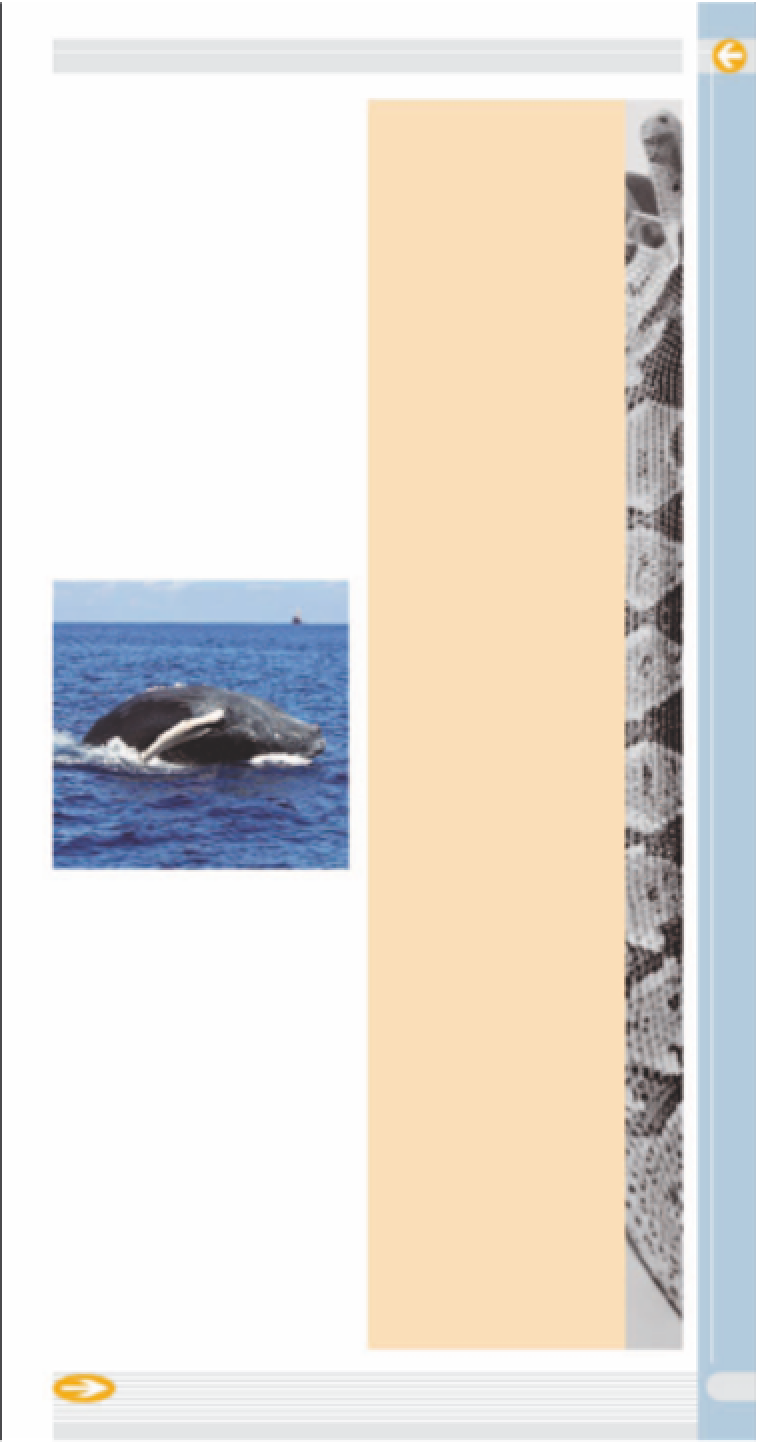Travel Reference
In-Depth Information
&
Puerto Rican Boas
Top 10 Birds
!
Cattle Egrets
These endangered, non-
venomous snakes, endemic to
the island, can grow to 9 ft
(3 m). They are found mostly in
the karst region of Puerto Rico,
where they feed on bats. In
sunlight, their skin gives off an
iridescent blue sheen.
*
Humpback Whales
These heron-like, snow-
white birds can be seen in
almost any field, especially
around flea-ridden cattle.
@
Yellow Warblers
Nicknamed “mangrove
canaries,” these mangrove-
dwellers are excellent singers.
£
Lizard Cuckoos
The Mona Passage, which
separates Puerto Rico and
Hispaniola, is a migratory path
for these marine mammals,
which can grow to a staggering
50 ft (15 m). It is enthralling to
see a humpback leap clear out of
the ocean
(see p110)
.
Listen for the tell-tale
guttural laugh of these tawny
endemics, which are identified
by their red eye-rings.
$
Emerald
Hummingbirds
The
zumbadorcito
, the world's
second-smallest bird, was
once worshipped by the Taíno
as a “god bird.”
%
Puerto Rican Parrots
The island's green
endemic parrots are critically
endangered and fewer than
50 remain in the wild.
^
Puerto Rican
Woodpeckers
These woodpeckers, found
throughout the island, can be
heard using their sharp beaks
to drill holes in tree trunks.
Humpback whale
&
Puerto Rican
Screech Owls
These small birds, nicknamed
“coo-coos” for their call, can
often be heard at dawn.
(
Bats
Puerto Rico has 13 species
of bats, which represent 80 per-
cent of the island's mammal
species. Most live in caves and
emerge at night to feed on
mosquitoes, fruit, and nectar;
the bulldog bat also catches fish.
)
Mona Iguanas
*
Red-Billed Tropicbirds
These graceful, snow-
white seabirds have a long,
forked streamer tail and a
pin-sharp red bill.
(
Frigatebirds
Black birds with a massive
wing-span, frigatebirds roost
atop mangroves and steal
from other seabirds.
This species of iguana is
found only on Isla Mona
(see
p75)
and can reach 3 ft (1 m) in
length. Despite their dragon-like
appearance, mona iguanas are
harmless vegetarians. They bask
in the sun to become active and
live on very sparse vegetation.
)
Pelicans
These birds, identified by
their long beak with a pouch,
skim the ocean surface.
55
Sign up for DK's email newsletter on
traveldk.com































